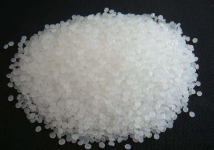read: 528 time:2025-07-02 15:48:54 from:化易天下
Pure acetic acid, also known as glacial acetic acid, is a commonly used chemical in various industrial processes. However, one intriguing property of this compound is its inability to conduct electricity in its pure form. To understand why pure acetic acid does not conduct electricity, we must delve into its molecular structure, ionization behavior, and the fundamental principles of electrical conductivity.
Acetic acid (CH₃COOH) is a simple carboxylic acid, comprising a methyl group (CH₃) attached to a carboxyl group (COOH). This molecular structure is covalent in nature, meaning the atoms within the molecule are bonded by shared electrons rather than by ionic bonds. In contrast, ionic compounds like sodium chloride (NaCl) dissociate into ions in solution, which can carry an electric charge. Since acetic acid is covalently bonded, it does not have free ions in its pure state, which is a key reason why pure acetic acid does not conduct electricity.
Another critical factor in why pure acetic acid does not conduct electricity is its limited ionization in its pure, anhydrous state. For a substance to conduct electricity, it must either possess free-moving ions or electrons. Pure acetic acid, being a weak acid, does not fully dissociate into ions (H⁺ and CH₃COO⁻) when in its pure form. In aqueous solutions, acetic acid partially ionizes, allowing it to conduct electricity to a limited extent. However, in the absence of water, this ionization does not occur significantly, resulting in poor conductivity.
To further clarify why pure acetic acid does not conduct electricity, it is essential to consider the role of water. When acetic acid is dissolved in water, it undergoes partial ionization, producing hydronium ions (H₃O⁺) and acetate ions (CH₃COO⁻), which are capable of conducting electricity. Water, being a polar solvent, stabilizes these ions and facilitates their movement, leading to the conductive properties observed in acetic acid solutions. In contrast, pure acetic acid lacks this solvent, preventing ion formation and, consequently, electrical conductivity.
To contextualize the behavior of acetic acid, it is useful to compare it with strong acids like hydrochloric acid (HCl). Strong acids fully dissociate in water, producing a high concentration of ions, which leads to strong electrical conductivity. Acetic acid, being a weak acid, only partially dissociates, and in its pure form, this dissociation is negligible. This comparison further highlights why pure acetic acid does not conduct electricity—the absence of free ions in its pure state is the fundamental reason.
Understanding why pure acetic acid does not conduct electricity requires a consideration of its molecular structure, lack of ionization in the pure state, and the absence of water as a medium for ionization. Unlike ionic compounds or strong acids, pure acetic acid remains non-conductive due to the absence of free-moving ions, which are essential for electrical conductivity. This property makes acetic acid a fascinating compound with distinct behavior, depending on whether it is in pure form or in solution.

Jincheng Petrochemical's 300000 ton polypropylene plant successfully trial production, 2024 polypropylene market analysis

The ABS market remains sluggish, what is the future direction?

Market differentiation of bisphenol A intensifies: prices rise in East China, while prices generally decline in other regions

The production method and process flow of silicone acrylic lotion, and what are the common raw materials